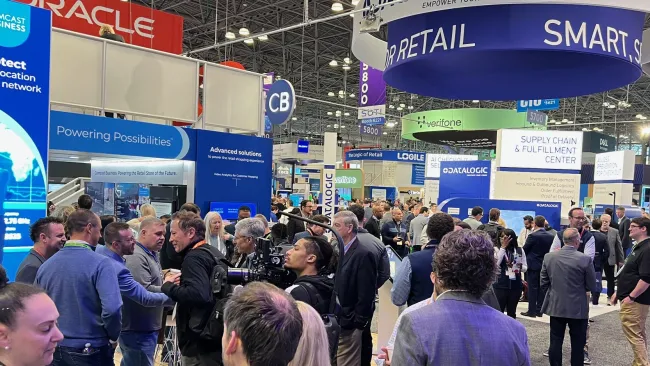
Electronics marketplace converts searchers into customers
Our client was looking to optimize paid search, display, and conversion rates. We enabled more conversions from search and time savings resulting in a 52% increase in click-to-conversion rate
Electronics marketplace converts searchers into customers
Our client was looking to optimize paid search, display, and conversion rates. We enabled more conversions from search and time savings resulting in a 52% increase in click-to-conversion rate
click-to-conversion
cost-per-acquisition
revenue ad spend
To stand out in the competitive online shopping world, an electronics e-commerce site partnered with us to optimize paid search, display, and conversion rates. In particular, we implemented inventory keyword campaigns in DoubleClick Search as a foundational part of the client’s digital marketing mix.
Four steps enable more conversions from search
Many shoppers like to search by SKU for electronic components when shopping on the client’s site. And with more than 400,000 SKUs in its feed, a manual approach to SKU-based paid search was sub-optimal. We got familiar with SKU-level campaigns using a manual approach, but soon transitioned to inventory keyword campaigns for an automated solution.
The client wanted a great customer journey beginning with the SKU search through to conversion. The ideal customer journey would start with a SKU search in any search engine that returns an ad with the exact SKU searched for, its price, and the current quantity available for sale. The ad would link to a product-level page on the client’s site where the buyer could see identical price and quantity information about the SKU, along with additional details, and complete the purchase.
We selected inventory keyword campaigns in DoubleClick Search to make the client’s ideal customer journey possible across the majority of its SKUs. To get started with inventory keyword campaigns, we focused on four steps:
- Optimize the client’s Google Merchant Center feed
- Set up the inventory keyword campaign structure
- Pull the optimized feed into a dynamic template
- Automate highly intelligent bid rules
“We trust the automated approach with DoubleClick Search,” says Russell Mensik, digital acquisition supervisor at TTEC Growth Services. “There really is no reason to keep a manual approach.”
We use the inventory items section in DoubleClick Search to make sure the client’s Google Merchant Center feed has fresh, accurate, and descriptive data. This section conveniently pulls and displays data directly from the feed. “We use inventory items to ensure the data integrity and to think through what we’re trying to do, such as set up naming conventions or optimize based on certain data points,” Mensik says. “We like the way we can examine the feed from within DoubleClick Search.”
To set up the inventory keyword campaign structure,we broke up the campaign by manufacturer, since the client sells components from more than 200 makers. The process from there was simple and straightforward in DoubleClick Search, according to Mensik.
“We selected the columns in the feed to leverage for keyword creation and landing pages. We also picked the match type and bid. Anyone with a good familiarity with the inventory feed will breeze through setting up an inventory keyword campaign.”Dynamic templates in DoubleClick Search helped realize our vision for relevant ads at the SKU level and find the most motivated buyers among SKU searchers. Dynamic templates automatically generate unique ads specific to each individual SKU based on a flexible combination of dynamic data from the Google Merchant Center feed and static text. In addition, the templates leverage formulas to ensure ad copy fits within the character limits required by search engines and can be aligned to the advertiser’s design preferences.
We designed a dynamic template to generate ads with the specific SKU users searched for, its price, its quantity, and a message that says the SKU’s manufacturer is commonly found at the client’s site. “We know this combination works really well,” Mensik says. “We also like to test new templates with DoubleClick Search. If we want to leverage a promo like free shipping or percentage off, we’ll go in and update our lowest performing templates with new messaging and watch their performance.”
As a final step, we configured automated bid rules. We leveraged our own feed, which contains all SKUs where the client has a competitive advantage, due to more inventory and better prices. “We use bid rules in DoubleClick Search to automatically bid more aggressively on these SKUs where the client has the advantage,” Mensik says. “We’re talking now about taking this a step further to include messaging in the ad that’s very straightforward about the advantage. With DoubleClick Search, we know we can leverage our custom feed that knows where we have an advantage, and communicate that advantage to prospective buyers. For example, when the client has the most inventory and the lowest prices on any given SKU that a buyer is searching for, DoubleClick Search gives us the ability to tell customers about it via a search ad on the shopper’s search results page.”
Time savings and peace of mind
As a result, there is time savings and peace of mind that comes along with automating a SKU-level campaign with inventory keyword campaigns. We save approximately six hours every week on what used to be manual tasks. And the inventory keyword campaigns also provide the client with the confidence that all SKUs are covered. If a SKU goes out of stock, the feed communicates the change to inventory keyword campaigns and DoubleClick Search automatically pauses ads for that SKU. “The full coverage of SKUs and real-time alignment with actual inventory levels is extremely reassuring,” Mensik says.
Impressive results for our client
Automating inventory keyword campaigns achieved impressive results for the eCommerce client. Dynamic templates and bid rules helped to considerably improve the ability to find motivated buyers among SKU searchers. The client saw a 52 percent click-to-conversion improvement after implementing inventory keyword campaigns. Now, clicks on the eCommerce site’s search ads result in more purchases.
“Component buyers really respond to more relevant ads,” Mensik says. “Not everybody has the level of detail or level of dynamics in their search ads that the client has now. And we carry the relevance all the way through the customer journey by showing buyers a product level page with all the same details that we promised them in the ad. The end result is a higher conversion rate and lower cost per lead.”
Overall, inventory keyword campaigns in DoubleClick Search enabled the ideal customer journey from SKU search all the way to conversion, and ultimately led to measurable success for the client’s bottom line. By the numbers, the client lowered its cost per lead by 28 percent and achieved a ratio of revenue to ad spend approaching 3:1 for its digital campaigns.












